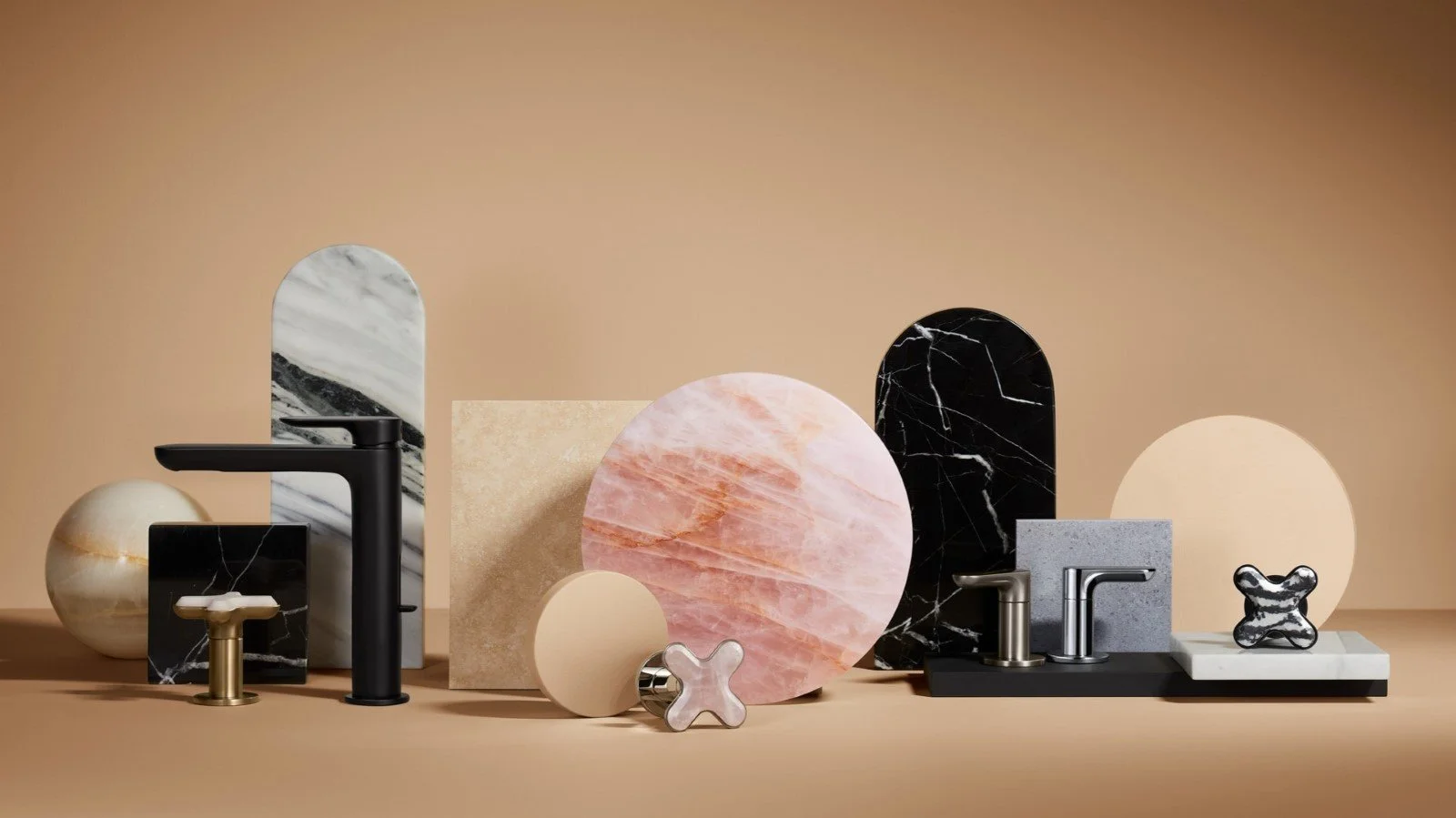Elevating Your Home with Marble: Pros, Cons, and Where to Use It
Marble was everywhere at Milan Design Week this month and I am a huge fan. I love how this time marble is being reinterpreted in more sophisticated ways, as a design-led element that elevates a piece of furniture in pairing with other materials, rather than a standalone object. Whether it’s incorporated at the top of a coffee or bedside table whilst mixed with wood and mirror, a geometric detail on the surface of a bench next to a padded seat, or shaping the legs of a minimalist dining table, marble made its way into most collections presented in Milan.
Image from Kallista
In addition, I was at a clients’ home this week and they had marble skirting boards and architraves throughout their home, elevating the space in a subtle, yet elegant and luxurious way.
With its timeless elegance and natural allure, marble has been adorning homes for centuries. From ancient sculptures to modern countertops, this exquisite stone continues to captivate homeowners with its luxurious appeal. However, many of us are a bit scared of marble as it comes with a number of stipulations. If you're considering incorporating marble into your home, understanding its pros, cons, and ideal usage is essential to make informed design decisions. Let's delve into the world of marble and explore how to utilize it effectively throughout your living spaces.
Image credit: Galloti & Radice
Why Marble?
Marble's popularity in home decor stems from its unparalleled beauty and versatility. Quarried from natural stone, marble features intricate veining and unique patterns, making each slab one-of-a-kind. Its luxurious appearance adds sophistication and prestige to any interior, elevating the ambiance of the space. Furthermore, marble is available in a variety of colours, ranging from classic whites to striking blacks and everything in between, ensuring there's a suitable option for every aesthetic preference.
Pros of Using Marble in the Home:
Timeless Elegance: Marble possesses a timeless quality that transcends trends, ensuring your home maintains its appeal for years to come.
Versatility: Whether used for flooring, countertops, backsplashes, or accent pieces, marble seamlessly integrates into various design styles, from classic to contemporary.
Durability: While not as hard as granite, marble is still a durable material that can withstand daily wear and tear when properly maintained.
Heat Resistance: Marble's natural heat resistance makes it an excellent choice for kitchen countertops, as it can withstand hot pans and pots without damage.
Natural Beauty: The unique veining and patterns of marble add character and visual interest to any space, creating a focal point that draws the eye.
Cons of Using Marble in the Home:
Porosity: Marble is a porous material, making it susceptible to staining from spills of acidic substances like wine, lemon juice, or vinegar. Sealing is essential to minimize this risk.
Scratch and Etch Prone: Despite its durability, marble is prone to scratching and etching, particularly in high-traffic areas or when exposed to acidic substances. Regular maintenance and care are necessary to preserve its appearance.
Maintenance: Marble requires regular maintenance, including sealing, cleaning with pH-neutral solutions, and avoiding abrasive cleaners to prevent damage to the surface.
Cost: Marble is a premium material, and its luxurious appeal comes with a higher price tag compared to other countertop options like laminate or quartz.
Limited Availability: While marble is widely available, certain types and colors may be more challenging to source, potentially limiting options based on location and availability.
Image credit: B&B Italia
Where to Use Marble in the Home:
Kitchen Countertops: Marble countertops add sophistication and charm to kitchen spaces, creating a focal point that enhances the overall aesthetic. Opt for honed finishes to minimize the appearance of scratches and etches.
Bathroom Vanities: Marble vanities bring a touch of luxury to bathrooms, creating a spa-like atmosphere that exudes elegance and refinement.
Flooring: Marble flooring adds a sense of grandeur to entryways, living rooms, and dining areas, making a striking first impression on guests.
Backsplashes: Marble backsplashes serve as a stunning backdrop in kitchens and bathrooms, adding visual interest and elevating the overall design.
Accent Pieces: Incorporate marble into your home decor through accent pieces such as coffee tables, side tables, or decorative objects, infusing a sense of sophistication into any room. It can even be used as skirting or architrave for an extra luxurious touch.
Marble remains a timeless choice for anyone seeking to elevate their living spaces with unparalleled elegance and sophistication. While it boasts numerous benefits, including versatility and durability, it's essential to consider its drawbacks, such as porosity and maintenance requirements, before incorporating it into your home. By being aware of the pros, cons, and ideal usage of marble, you can make informed design decisions that enhance the beauty and ambiance of your living spaces for years to come.



